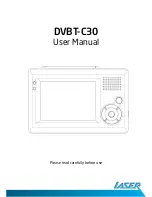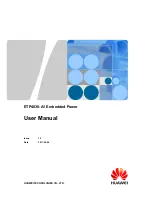
14
• Place the standby generator in a prepared location
that is flat and has provisions for water drainage.
• Install the standby generator in a location where
sump pump discharge, rain gutter down spouts, roof
run-off, landscape irrigation, or water sprinklers will
not flood the unit or spray the enclosure and enter
any air inlet or outlet openings.
• Install the standby generator where it will not affect or
obstruct any services (including covered, concealed
and underground), such as telephone, electric, fuel
(natural gas / LPG vapor), irrigation, air conditioning,
cable, septic, sewer, well and so forth.
• Install the standby generator where leaves, grass,
snow, etc will not obstruct air inlet and outlet
openings. If prevailing winds will cause blowing or
drifting, you may need to construct a windbreak to
protect the unit.
Requirements:
NFPA 37 2010, section 4. 1. 4, Engines Located Outdoors.
Engines, and their weatherproof housings if provided, that
are installed outdoors shall be located at least 1.5m (5 ft)
from openings in walls and at least 1.5 m (5 ft) from structures
having combustible walls. A minimum separation shall not be
required where either of the following conditions exist:
1. The adjacent wall of the structure has a fire resistance
rating of at least 1 hour.
2. The weatherproof enclosure is constructed
of noncombustible materials and it has been
demonstrated that a fire within the enclosure will not
ignite combustible materials outside the enclosure. *
* Annex A Explanatory Material
A.4.1.4 (2) Means of demonstrating compliance are by means
of full-scale fire tests or by calculation procedures, such as
those given in NFPA 555,
Guide on Methods for Evaluating
Potential for Room Flashover.
To comply with condition 2 above the weatherproof
enclosure has been constructed completely of non-
combustible materials and full-scale fire tests have been
conducted to demonstrate that a fire within the enclosure
will not ignite combustible materials outside the enclosure.
A U.S. Department of Labor Occupational Safety & Health
Administration (OSHA) Nationally Recognized Testing
Laboratory (NRTL) performed full scale fire demonstration
testing. This 3rd party independent NRTL evaluated
many worst-case ignition scenarios. The results of the
demonstration testing concluded that a fire within the
enclosure would not ignite combustible materials outside the
enclosure.
Other General Location Guidelines
National Fire Protection Association (NFPA) Standard NFPA 37 Requirements and Testing
Not
for
Reproduction
Summary of Contents for HOME NERATOR SYSTEM 11000 WATT
Page 29: ...29 N o t f o r R e p r o d u c t i o n...
Page 30: ...30 Schematic Diagram 11 000 Watt Schematic Wiring Diagrams N o t f o r R e p r o d u c t i o n...
Page 31: ...31 Wiring Diagram 11 000 Watt N o t f o r R e p r o d u c t i o n...
Page 32: ...32 Schematic Diagram 13 000 Watt N o t f o r R e p r o d u c t i o n...
Page 33: ...33 Wiring Diagram 13 000 Watt N o t f o r R e p r o d u c t i o n...















































